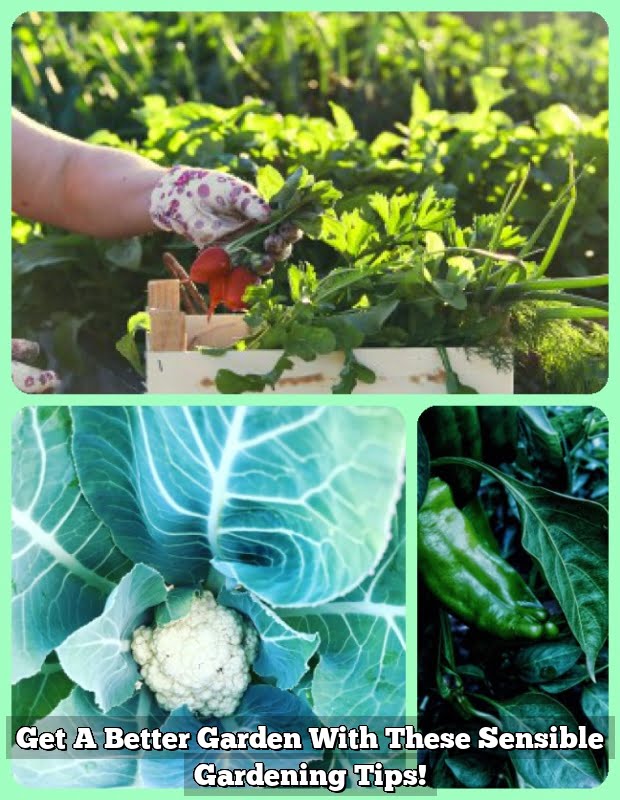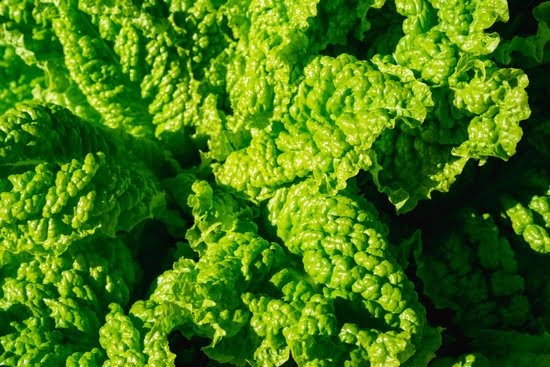Are you looking to start your own vegetable garden? Whether you’re a beginner or an experienced gardener, these gardening tips for a vegetable garden will help you plan and organize your space for optimal growth and yield. From selecting the right vegetables to maintaining your garden throughout the seasons, this article provides comprehensive guidance to help you create a successful vegetable garden.
When it comes to planning your vegetable garden, there are several factors to consider. In this section, we will provide a step-by-step guide to designing and organizing your garden, taking into account the layout, sunlight exposure, and spacing of your chosen vegetables. By following these tips, you can ensure that each plant has the best chance of thriving in its environment.
Choosing the right vegetables is crucial for a successful vegetable garden. Factors such as climate, soil type, and personal preferences play a significant role in selecting the best vegetables to grow. In this article, we will offer practical tips for choosing the most suitable vegetables for your specific conditions, ensuring that your garden is both productive and well-suited to your tastes. With the right planning and selection of vegetables, you can set yourself up for a fruitful gardening experience.
Choosing the Right Vegetables
When choosing vegetables for your garden, start by researching the typical growing conditions for each type of vegetable. Some vegetables, such as tomatoes and peppers, require plenty of sunlight and warm temperatures, while others like lettuce and spinach prefer cooler weather. Take note of your local climate and average temperature range to determine which vegetables will thrive in your area.
In addition to climate considerations, it’s important to assess your soil type before selecting which vegetables to plant. For example, root vegetables like carrots and radishes prefer loose, well-draining soil, while leafy greens such as kale and Swiss chard can tolerate heavier soils with good moisture retention. Conduct a soil test or consult with a gardening expert to understand the composition of your soil and make informed decisions about which vegetables to grow.
Lastly, consider your personal preferences when choosing vegetables for your garden. Think about which vegetables you and your family enjoy eating the most, as well as which ones are versatile for cooking and meal planning. Growing vegetables that you love will not only bring you joy but also motivate you to tend to your garden consistently.
| Vegetable | Ideal Climate | Soil Type |
|---|---|---|
| Tomatoes | Warm temperatures, plenty of sunlight | Well-draining soil |
| Lettuce | Cooler weather | Moisture-retentive soil |
| Kale | Cooler weather | Heavy soils with good moisture retention |
Preparing the Soil
When it comes to preparing the soil for your vegetable garden, there are several key techniques to ensure that your plants have the right nutrients and drainage for optimal growth. Here are some practical tips to help you get started:
1. Test Your Soil: Before you start any soil preparation, it’s important to test your soil to determine its pH level and nutrient content. You can buy a DIY soil testing kit or send a sample to a professional lab for analysis. Once you know what your soil needs, you can take the necessary steps to amend it.
2. Add Organic Matter: Incorporating organic matter into your soil, such as compost or well-rotted manure, can improve its structure and nutrient content. Organic matter also helps with water retention and drainage, which is essential for healthy plant growth in a vegetable garden.
3. Consider Raised Beds: If your soil has poor drainage or is of low quality, consider building raised beds for your vegetable garden. This allows you to have better control over the soil composition and provides improved drainage for the roots of your plants.
By following these practical soil preparation techniques, you can ensure that your vegetable garden has the right nutrients and drainage for healthy and productive plant growth. These steps will set the foundation for a successful gardening season, allowing you to enjoy a bountiful harvest of fresh vegetables. Remember that proper soil preparation is essential for the long-term health of your garden, so take the time to do it right from the beginning.
Planting Seeds and Seedlings
When it comes to starting a vegetable garden, planting seeds and transplanting seedlings are essential steps that require careful attention and proper technique. Successful germination and growth of your vegetables depend on getting this step right. Here are some detailed instructions on how to plant seeds and transplant seedlings for various types of vegetables.
Planting Seeds
Before planting seeds in your vegetable garden, it’s important to consider the specific requirements of each type of vegetable. Some seeds need to be sown directly into the soil, while others benefit from being started indoors and then transplanted once they have sprouted. Make sure to read the instructions on the seed packets or do some research to determine the best approach for each vegetable.
When planting seeds directly into the soil, it’s crucial to prepare the bed by loosening the top layer of soil, removing any debris or weeds, and adding organic matter like compost or fertilizer. This will provide a good foundation for the seeds to germinate and establish roots.
Transplanting Seedlings
For vegetables that require starting indoors, such as tomatoes or peppers, you’ll need to plant seeds in small containers with well-draining soil. Once they have reached a certain size and have developed a strong root system, they can be transplanted into your vegetable garden.
When transplanting seedlings, it’s important to handle them carefully to avoid damaging their delicate roots. Dig a hole in the prepared soil that is slightly larger than the root ball of the seedling, gently remove it from its container, and place it in the hole at the same level as it was growing before. Water thoroughly after transplanting to help reduce transplant shock.
Following these detailed instructions for planting seeds and transplanting seedlings will set a strong foundation for your vegetable garden’s success. By ensuring that each type of vegetable is planted correctly according to its specific needs, you can look forward to a bountiful harvest in your garden.
By adhering strictly with these gardening tips vegetable garden enthusiasts will greatly improve their chances of a successful bounty come harvest time.
Watering and Irrigation
Watering is a crucial aspect of maintaining a healthy and productive vegetable garden. Proper watering promotes healthy growth and ensures that your plants have the moisture they need to thrive. However, overwatering or underwatering can lead to issues such as root rot, nutrient leaching, and stunted growth. In this section, we will provide expert tips on how to properly water your vegetable garden to avoid these problems and promote optimal plant health.
One important tip for watering your vegetable garden is to water deeply and infrequently. This encourages deep root growth and helps plants become more resilient during periods of drought. It’s better to give your plants a thorough soaking less often than to lightly water them more frequently. Additionally, it’s best to water in the morning or early in the evening when temperatures are cooler, as this reduces evaporation and allows the water to penetrate the soil more effectively.
Another useful tip is to monitor soil moisture regularly. You can do this by using a simple moisture meter or by checking the soil with your finger. If the soil feels dry at a depth of about an inch, it’s time to water.
On the other hand, if it feels moist, you can hold off on watering for a little while longer. This prevents overwatering and ensures that your plants are receiving the right amount of moisture for their needs.
Proper irrigation is essential for a successful vegetable garden. Different vegetables have different water requirements based on factors such as their stage of growth and environmental conditions. Understanding these needs and following expert tips for proper watering will help you maintain a thriving vegetable garden.
| Watering Tips | Benefits |
|---|---|
| Water deeply and infrequently | Promotes deep root growth and resiliency |
| Monitor soil moisture regularly | Prevents overwatering and promotes optimal moisture levels |
| Understand different vegetables’ water requirements | Ensures that each plant receives the proper amount of moisture |
Fertilizing and Mulching
When it comes to maintaining a thriving vegetable garden, proper fertilizing and mulching are essential practices to ensure the health and productivity of your plants. Here are some best practices for fertilizing your vegetable garden and the benefits of using mulch to control weeds and retain moisture:
Fertilizing Your Vegetable Garden:
- Know your soil: Before applying any fertilizer, it’s important to test your soil to determine its pH and nutrient levels. This will help you understand what type of fertilizer your garden needs.
- Choose the right fertilizer: Once you know the specific needs of your soil, choose a fertilizer that is appropriate for your vegetable garden. Whether it’s organic or synthetic, make sure it provides the necessary nutrients for healthy plant growth.
- Follow application guidelines: Different types of fertilizers have specific application instructions. Be sure to follow these guidelines carefully to avoid over-fertilizing or damaging your plants.
Using Mulch in Your Vegetable Garden:
- Weed control: Mulch acts as a barrier between the soil and the air, preventing weed seeds from germinating and growing. This helps reduce the time and effort spent on weeding while keeping your garden looking clean and organized.
- Retain moisture: Mulch also helps retain moisture in the soil by reducing evaporation, which is especially beneficial during hot weather or drought conditions. This can help conserve water and reduce the frequency of watering needed for your vegetable garden.
- Protect plant roots: A layer of mulch around your plants can protect their roots from extreme temperatures, insulate them during winter, and prevent soil erosion during heavy rainfalls.
By following these best practices for fertilizing and using mulch in your vegetable garden, you can promote healthy plant growth, minimize weeds, conserve moisture, and ultimately enjoy a bountiful harvest of fresh vegetables.
Pest and Disease Management
Identifying Common Pests and Diseases
One of the key aspects of maintaining a healthy vegetable garden is being able to identify common pests and diseases that can affect your plants. Some common pests to watch out for in a vegetable garden include aphids, caterpillars, and snails, while diseases such as powdery mildew and blight can also pose a threat.
By regularly inspecting your plants for any signs of damage or unusual discoloration, you can catch these issues early and take appropriate action to prevent them from spreading.
Preventative Measures
There are several preventative measures that you can take to reduce the risk of pests and diseases affecting your vegetable garden. One effective method is to rotate your crops each year, as this can help prevent the build-up of specific pests and diseases in the soil.
Additionally, practicing good sanitation by removing any dead or diseased plant material from the garden can help prevent the spread of disease. Using row covers and companion planting techniques can also help protect your plants from pests without the need for chemical intervention.
Natural Remedies and Treatment
In the event that pests or diseases do impact your vegetable garden, there are several natural remedies and treatments that you can utilize. For example, introducing beneficial insects such as ladybugs or lacewings can help control pest populations without resorting to chemical pesticides. Certain organic sprays made from ingredients like neem oil or garlic can also be effective in controlling common pests without harming beneficial insects or wildlife.
When it comes to treating plant diseases, utilizing compost tea and other organic disease-fighting preparations can provide an effective solution without relying on synthetic chemicals. By being proactive and using natural methods for pest and disease management, you can maintain a thriving vegetable garden while minimizing harm to the environment.
Harvesting and Maintenance
Harvesting your vegetables at the right time is crucial to ensure that you enjoy the best flavor and freshness. Different vegetables have different indicators for when they are ready to harvest. For example, tomatoes should be picked when they are fully colored and firm, while leafy greens like lettuce and spinach can be harvested when they reach a desirable size.
It’s important to familiarize yourself with the specific harvest times for each type of vegetable in your garden to avoid picking them too early or too late. Additionally, using a sharp knife or pruning shears to harvest your vegetables can help prevent damage to the plants.
In addition to harvesting, ongoing maintenance is essential for a thriving vegetable garden. Regular weeding is important to prevent weeds from competing with your vegetables for nutrients and water. Mulching around your plants can also help control weed growth while retaining moisture in the soil.
Furthermore, regularly checking for signs of pests and diseases is crucial in maintaining a healthy garden. By catching potential issues early on, you can take proactive measures to keep your vegetable garden pest-free and disease-resistant.
Furthermore, as part of maintenance, it’s important to continue providing proper care such as regular watering and fertilizing as needed. Keeping an eye on the condition of your plants can help you identify any deficiencies or problems early on so that you can address them promptly. By staying attentive to the needs of your vegetable garden, you can ensure that it remains productive throughout the growing season.
Seasonal Gardening Tips
In conclusion, creating and maintaining a successful vegetable garden requires careful planning, consistent care, and attention to detail. By following the tips outlined in this article, you can ensure that your garden produces a bountiful yield of healthy and nutritious vegetables throughout the year.
It’s important to remember that gardening is a continuous process that evolves with each season. As such, it’s crucial to stay informed about the specific needs of your plants during different times of the year. Whether it’s adjusting your watering schedule during the hot summer months or protecting your crops from frost in the winter, being attuned to seasonal changes will help you maximize your garden’s potential.
Additionally, seeking out local resources such as gardening clubs, nurseries, or extension offices can provide valuable insights into regional gardening practices and recommendations for vegetable varieties that thrive in your specific climate. Taking the time to adapt your gardening approach based on seasonal shifts and local conditions will ultimately lead to a more fruitful and rewarding vegetable garden.
In summary, by implementing these seasonal gardening tips in conjunction with the earlier steps outlined in this article, you can create a thriving vegetable garden that provides an abundant supply of fresh produce throughout the year. From meticulous soil preparation to diligent pest management and ongoing maintenance, following best practices for each season will help keep your garden healthy and productive for many seasons to come. Happy gardening.
Frequently Asked Questions
How Do You Grow a Perfect Vegetable Garden?
Growing a perfect vegetable garden requires careful planning, proper soil preparation, adequate sunlight, regular watering, and timely fertilization. It’s essential to choose the right vegetables for your climate and consider companion planting.
What Are 5 Things You Should Do to Prepare a Good Veggie Garden?
To prepare a good veggie garden, start by testing and improving your soil, selecting the right location with sufficient sunlight, providing proper drainage, choosing the best vegetables for your climate, and establishing a regular watering and maintenance routine.
What Is a Good Layout for a Vegetable Garden?
A good layout for a vegetable garden involves organizing your plants in rows or raised beds to maximize space and facilitate easy access for planting, weeding, and harvesting. Consider grouping vegetables with similar light and water requirements together to optimize growth and yield.

If you’re looking to get into vegetable gardening, or are just looking for some tips on how to make your current garden better, then you’ve come to the right place! My name is Ethel and I have been gardening for years. In this blog, I’m going to share with you some of my best tips on how to create a successful vegetable garden.





